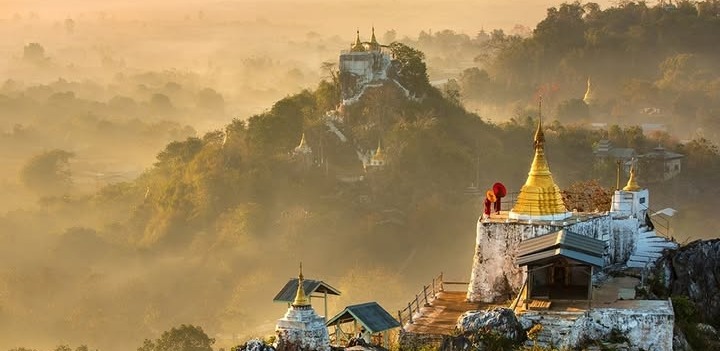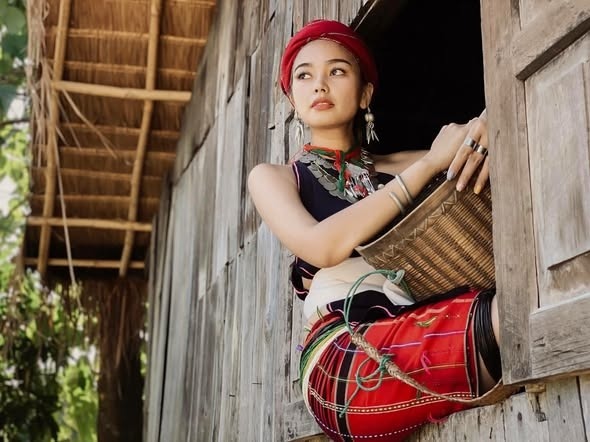
Kayah State: People, Culture, Traditions, and Heritage of Myanmar’s Smallest State
Kayah State, formerly known as Karenni State, is the smallest but one of the most culturally rich and diverse regions in Myanmar. Located in the country’s eastern highlands and sharing a border with Thailand, Kayah State is home to a variety of ethnic groups, distinctive cultural traditions, breathtaking natural scenery, and ancient spiritual practices that still thrive today.
Despite its size, Kayah State has gained international recognition for the unique cultural identity of the Kayan (Padaung) women, known globally for their iconic brass neck rings. Beyond this famous tradition lies a wealth of customs, histories, dances, festivals, and landscapes that make Kayah one of Myanmar’s most fascinating regions.
Geographical Setting
Kayah State sits in the hilly region of eastern Myanmar, bordered by Shan State to the north, Kayin State to the south, and Thailand’s Mae Hong Son Province to the east. The terrain is dominated by:
forested hills
misty mountains
winding rivers
fertile valleys
The Thanlwin (Salween) River, one of Asia’s great rivers, flows along part of its border. Kayah’s climate is cooler than Myanmar’s central plains, especially in highland towns like Loikaw, Hpruso, and Demoso.
The landscapes make Kayah ideal for eco-tourism, trekking, cultural village tours, and nature-based adventures.
Ethnic Diversity of Kayah State
Despite its small area, Kayah State is ethnically diverse, home to several tribes under the broader “Karenni” identity.
Major groups include:
Kayah (Red Karen)
Kayan (Padaung)
Kayaw (Brekhó)
Yintale
Geko (Ka-Kho)
Gebar
Manumanaw
Bwe
Paku Karen
Shan communities
Each of these groups has distinct languages, dress, customs, and rituals. Many villages remain culturally preserved, offering authentic insight into traditional lifestyles.

The Kayah People
The state is named after the Kayah people, also known as Red Karen due to their red-colored traditional dress. The Kayah are known for:
intricate weaving
animist beliefs
spirit poles (Kaehtobo) traditions
traditional rice wine
community festivals
The Kayan (Padaung) People
The Kayan, especially the Kayan Lahwi subgroup, have become world-famous for their women who wear brass neck rings, giving the appearance of elongated necks. This tradition is unique to Kayan culture and is often misunderstood—but deeply meaningful within the community.
Kayaw (Brekhó) People
Kayaw women wear large earrings and distinctive traditional clothing. Their dances and festivals are vibrant and unique.
This cultural diversity makes Kayah State one of Myanmar’s richest ethnic mosaics.
History and Political Background
Kayah State historically consisted of several small principalities ruled by local chiefs known as Sawbwas.
Pre-colonial era
The region maintained considerable independence due to its mountainous terrain and tribal governance structures. Many communities lived traditionally, relying on agriculture, hunting, and spiritual rituals.
Colonial period
Under British administration, the Karenni states were recognized as independent protectorates. Unlike other regions, they were never fully annexed into British Burma, leaving a unique historical legacy.
Post-independence
After Myanmar’s independence in 1948, the region was incorporated as Karenni State before later being renamed Kayah State. Despite modern challenges, the region maintains strong cultural resilience.
Culture and Traditions
Kayah State is known for its deeply rooted customs, many of which are preserved more strongly here than in other parts of Myanmar.
1. Spirituality and Animism
Although some groups practice Buddhism or Christianity, many communities still follow ancient animist beliefs.
A key symbol is the Kaehtobo (spirit pole), a tall wooden structure erected during festivals to honor guardian spirits. Rituals around the spirit poles reflect gratitude for harvests, protection from harm, and blessings for the community.
2. Traditional Clothing
Each tribe has distinct clothing styles:
Kayah women: red-and-black woven dresses with silver accessories
Kayan women: brass neck rings, arm rings, and calf rings
Kayaw women: large circular earrings, brightly patterned skirts
Yintale: simple cotton garments with handmade ornaments
Traditional weaving remains an important cultural craft, with patterns passed down through generations.
3. Music and Dance
Kayah music features:
bamboo flutes
traditional drums
string instruments
rhythmic chanting
Dances are performed at festivals, weddings, and village ceremonies—often involving intricate steps symbolizing unity, courtship, or spiritual stories.
4. Festivals
Kayah State hosts several cultural festivals throughout the year:
Kayah National Day
Celebrated with traditional dances, food fairs, and cultural displays showcasing all Karenni tribes.
Kay Htoe Boe Festival
One of the most important animist festivals, featuring rituals around the sacred spirit poles, traditional sports, prayers, and communal dancing.
Kayan New Year
Observed with dance performances, music, tribal fashion, and offerings.
Harvest Festival
Celebrated with feasting, drinking rice wine, and giving thanks to ancestral spirits.
These festivals highlight the rich cultural unity among Kayah tribes.
The Famous Kayan Neck Rings: Meaning and Tradition
The Kayan women’s brass neck rings have captivated global attention, often misunderstood as a painful or restrictive practice. In reality, they hold deep cultural significance.
Cultural meanings include:
symbol of beauty and tribal identity
mark of womanhood and maturity
protection of cultural heritage
spiritual symbolism
The rings do not elongate the neck, but gently press down the collarbone and ribs, creating the visual effect of a longer neck. Girls may begin wearing the rings around age five, gradually adding more.
Today, not all Kayan girls choose to wear them—modern identity is flexible, but the tradition remains a powerful symbol of cultural pride.
Tourism and Important Destinations
Kayah State is increasingly recognized for cultural tourism, especially around Loikaw, the state capital.
1. Taung Kwe Pagoda (Hillside Pagoda) – Loikaw
A dramatic pagoda built on limestone cliffs, offering panoramic views of Loikaw. It is the state’s most iconic landmark.
2. Pan Pet Kayan Village
A cultural village where visitors can meet Kayan women, learn weaving traditions, listen to local stories, and support community-based tourism.
3. Hta Nee La Leh Village
A culturally rich Kayah village showcasing traditional weaving, spirit pole sites, and village rituals.
4. Daw Saw Bee Cave and Waterfall
A natural attraction featuring clear water, sacred cave sites, and jungle scenery.
5. Demoso Market
Famous for its local products, such as Kayah rice wine, traditional textiles, and organic vegetables.
6. Ngwe Taung Dam
A scenic lake surrounded by green hills, popular for relaxation and photography.
7. Belu Lake (Ghost Lake)
A mysterious, serene lake associated with local legends.
Kayah State offers a unique blend of natural beauty and cultural authenticity rarely found elsewhere.
Cuisine of Kayah State
Kayah cuisine is distinctive and delicious, known for fresh herbs, spices, and natural ingredients.
Key Dishes
Kayah Sausage – The region’s most famous food; made with pork, garlic, herbs, and spices.
Khaung Yae (Rice Wine) – Popular at festivals and ceremonies.
Sticky rice with sesame
Wild vegetable salads
Spicy meat curries with forest herbs
Grilled dishes wrapped in banana leaves
Kayah Sausage, in particular, is now sold across Myanmar and has become a sought-after local delicacy.
Economy and Livelihood
Kayah State’s economy relies on:
agriculture: rice, sesame, corn, millet
livestock
traditional weaving
handicrafts
tourism
forest products
Many villages also produce handwoven scarves, bamboo crafts, and herbal products for sale.
Modern Kayah State
Today, Kayah State is a developing region where traditional culture remains strong despite modernization. Efforts to promote community-based tourism, preserve ethnic identity, improve education, and support local artisans continue to strengthen the region’s future.
Loikaw has become a cultural center showcasing the voices of all Karenni tribes. The people of Kayah take pride in their heritage, passing down stories, dances, weaving patterns, and spiritual practices to younger generations.
Conclusion
Kayah State, though small in size, is vast in cultural richness, heritage, and natural beauty. From the iconic brass rings of the Kayan women to the sacred spirit pole festivals of the Kayah villages, the region offers an extraordinary tapestry of traditions found nowhere else in Myanmar.
With its peaceful mountains, unique tribal customs, and warm hospitality, Kayah State stands as a captivating destination—one that preserves the ancient soul of the eastern highlands while embracing a hopeful and vibrant future.
Related posts:
No related posts.
